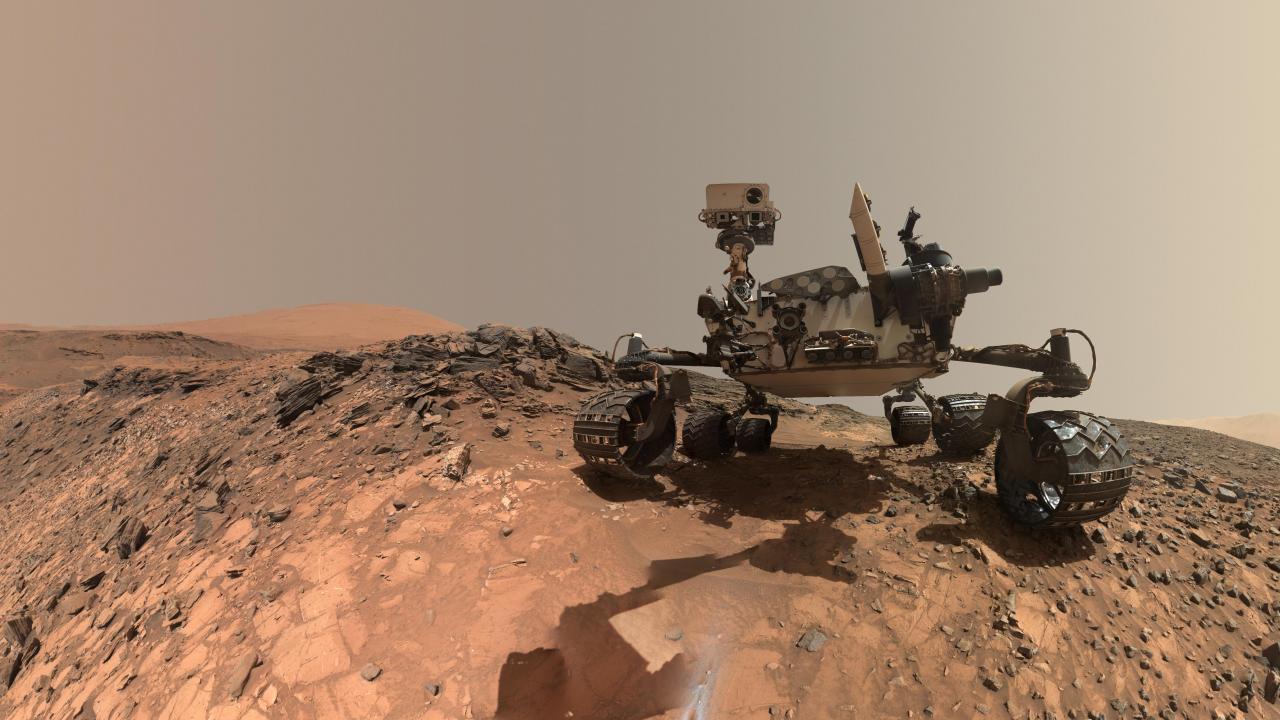
Curiosity Rover Finds Organic Matter on Mars
The Mars Curiosity rover team announced today (June 7) finding organic matter – carbon-based compounds – in three billion year old mudstone sediments from Gale Crater. They also found seasonal changes in the amount of methane in the local atmosphere.
Dawn Sumner, professor of earth and planetary sciences, is a member of the Mars Curiosity team and coauthor on the first paper. She helps with sample selection and mission planning and was instrumental in promoting Gale Crater as a landing site for Curiosity.
Gale Crater has a sequence of layers of rocks, much like the Grand Canyon on Earth, Sumner said in 2012 as the mission prepared for landing. From orbital studies, there was also evidence of both clays and salts, both of which require water to form. That made the crater a good spot to look for evidence of whether Mars had ever had liquid water on the surface, or even if the planet supported (or still supports) life. Thanks to Curiosity, we now know that Gale Crater did indeed contain a lake, fed by streams, in its distant past.
Organics in mudstone
In the new work to be published June 8 in Science, the team led by Jen Eigenbrode of NASA’s Goddard Space Flight Center in Greenbelt, Maryland report that mudstone sediments laid down in that lake billions of years ago contain a mix of organic compounds made up of carbon, hydrogen, oxygen and sulfur. Organic compounds have been detected in Martian soils before, but at much lower quantities.
“Whether it holds a record of ancient life, was food for life, or has existed in the absence of life, organic matter in Martian materials holds chemical clues to planetary conditions and processes,” Eigenbrode said in a NASA news release. The organic material could also have come from meteorites, volcanos or other non-biological sources.
The fact that organic matter was found near the Martian surface, exposed to solar radiation and the Martian atmosphere, suggests that there might be a lot more organic material deeper below the surface where conditions are less extreme, the authors said.
In a second paper also published in Science June 8, researchers reported finding seasonal changes in the amount of methane in the atmosphere at Gale Crater over three Martian years. Methane levels peaked in the warmer summer months and dropped over winter. The methane could be coming from chemical reactions, but “but scientists cannot rule out the possibility of biological origins,” according to NASA’s news release.
— Andy Fell, UC Davis News
